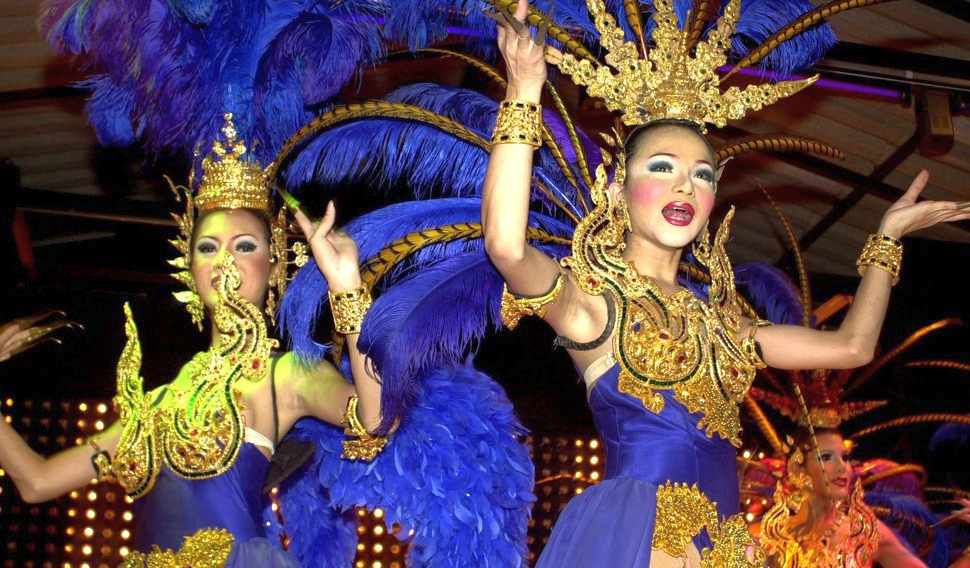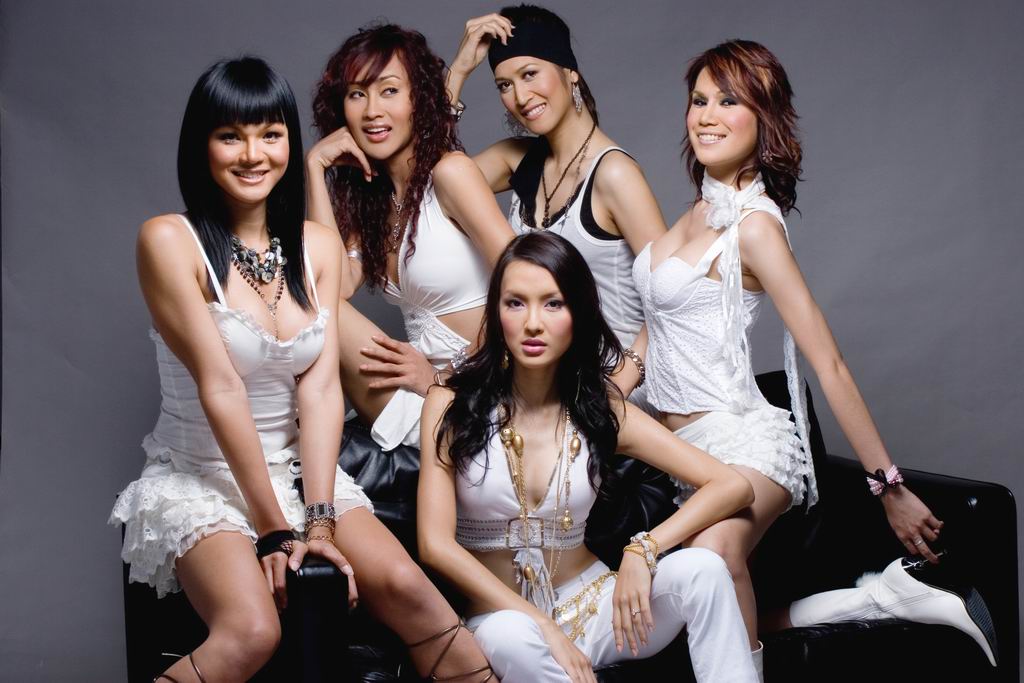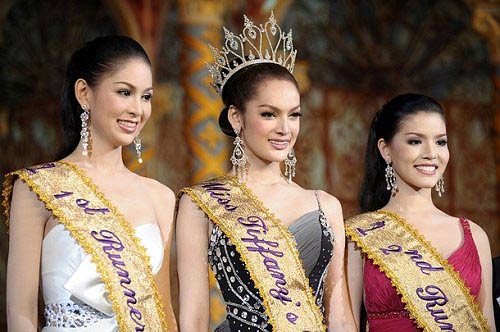Originally posted 2022-11-18 18:58:50.
Thai kathoeys have long been recognised in the Kingdom of Siam and are now known globally. This article was translated from the original French, by me, and edited and improved.

According to Buddhist precepts, being kathoey might be a “punishment” from a previous life: in it, the man cheated on a woman and to understand how she feels, he is reborn as a woman in a man’s body. In part thanks to this legend, the kathoey are accepted in the Land of Smiles. After all, in a culture where male philandering is practically standard, being a kathoey might be the fate of all such men, in a future life.

As a result of this tolerance, at time of writing, Thai kathoeys were more numerous there than transwomen in all of Europe combined. Even the lowest current estimate of 500,000 equates to twenty times as many transwomen as in France, a nation of similar population, for example. Other estimates suggest three times that many. With their numbers far over any ‘tipping point’, Thai kathoeys today are a commonplace, quotidian sight all across the Kingdom.
[kofi]
One would have to be blind not to notice their presence on any urban street and even in tiny remote villages. They are asserting their presence and their right to be heard and taken seriously — and they are succeeding. In fact, the kathoey phenomenon in Thailand has been a beacon to similar gender expressions all over southeast Asia. Warias in Indonesia, for example, despite hostility from some Muslims, are making themselves known, coming out of the shadows and in the Philippines, like Thailand, they are everywhere, on television, in movies, in the streets, on billboards fifty feet high. The same holds true all over the region: the ladyboy dam has finally burst. Good luck patching that up.

Thai kathoey: a definition covering several others.
Many Westerners think the term ‘ladyboy’ which is cognate to ‘kathoey’, only refers to males who present as women, but this is not true. Although according to the dictionary of the Royal Thai Academy, “kathoey” means “person having both male and female sex” or “person having the spirit and manner of being opposite to one’s original sex ”, it does not stop there. It includes all transsexual, transvestite, intersex, hermaphrodite and transgender people, as well as all homosexuals and lesbians, irrespective of how they present.
[kofi]
The important thing to remember, in all of these cultures, is that in order to be a man, one must be masculine, indeed, macho, and this is most marked in the lower social classes. If one is male but not masculine, then being a man is impossible. But such a person cannot be a woman, because just as ‘man’ is defined by ‘masculinity’, woman is defined by ‘motherhood’ and no ladyboy can ever be a mother. So what identity is open to them? Kathoey, ladyboy, bakla or any of the others.
(Again in the upper echelons, which are far more Westernised, it’s notable that homosexuals often try to distance themselves from Thai ladyboys, but this does not apply in ordinary society. Indeed, at time of writing there seems to be a quiet turnaround going on such that Western homosexual representations are being rejected in favour of more traditional ones — which is to say, much more feminised ones. This is probably to do with the general rejection of the United States and its values across the region and to be fair, the very high public profile of many successful ladyboys. – RF)
[kofi]

The Buddhist religion does not condemn transsexualism and recognizes four different genders: male, female, dual nature and unusual sexual nature. While this may have been instrumental in Thai kathoeys breaking out into the broader society, that would not explain the similar phenomena in other countries in the region, like the Philippines, Catholic, or Indonesia (majority Muslim).
[kofi]
The real cause seems to be deeper and that is Animism, a culture which was ubiquitous until foreign religions arrived. Yet these new influences sit like a sometimes awkward overlay on the Animist beliefs of the past. In Animist cultures, transwomen and transmen are venerated as shamans, healers, and ministers of supernatural power. While Buddhism certainly protected Thailand from the excesses of European, Muslim and American colonists, which did so much damage elsewhere, the cultural similarity demonstrated by ladyboys, across nations which are widely disparate in official religions, indicates a deeper cause.
Unlike many Western countries, the Kingdom of Siam is much more tolerant of its transwomen. Moral judgments are almost non-existent on this subject. You can be a man, a woman or both, or even neither, nobody cares and that does not prevent anyone from being respected at their fair value and from finding housing or work. Tolerance is one of the great virtues of Thailand.
Thai kathoeys may adopt the gender opposite to their sex, sometimes going as far as full transition through surgery. But although this comes at a high cost and is relatively uncommon, that does not prevent them from undergoing hormonal treatment enthusiastically. In most of the region, contraceptive pills are freely available, without prescription, in convenience stores and pharmacies. These are not ideal as HRT by any means but they are effective, cheap and available. For the boy who wants to be a girl, it’s no trick to acquire the medication.
[kofi]
However, don’t be fooled. All is not rosy and wonderful. Even if they are rather well integrated, it sometimes remains an illusion. If a Thai kathoey embarks on aesthetics, beauty contests (like Miss Tiffany or Miss Trans Universe), show business, nursing, air hostess, pharmacist, saleswoman, entrepreneur elementary schoolteacher … she can succeed. On the other hand, in more “serious” professions such as the civil service, professor, politician… it will be much more difficult for her to be accepted and to be credible.
[kofi]
The family context also plays a role because even if the majority accept kathoey sons well, some are still kicked out of their homes and find themselves on the street. Many are technically unemployed, although likely freelancing in live-action sex work or in the online versions available today — through which they can make many times more than, say, a schoolteacher.

Genital Reconstruction being quite expensive, ladyboys will want to earn a good enough living to be able to have surgery and for many, live sex work remains a solution, although today, social media put them in touch with apparently large numbers of sex-starved Western men, only too willing to shell out a few thousand dollars for a beautiful girl’s attention — even online.
Most Thai kathoeys do not undergo genital reconstruction, however, because they are satisfied with hormonal treatments; they see these as especially efficient cosmetics, rather than as a means to ‘change sex’. Others are afraid that with the loss of their penises, they will lose their ‘moneymakers’, since so many Western men are apparently fascinated by them. Thai kathoeys, like transwomen in other parts of southeast Asia, do not believe they are ‘real women’ and think that harbouring such delusions is deranged.

Thai Kathoeys can live in their gender from an early age
A noticeable difference from the West is that kathoeys can be themselves from their youth. They can express themselves as young girls at school with accessories and jewelry, despite the uniform, which will remain that of a boy. Since many will begin feminising hormones by the age of twelve and some before, this gives rise to the fascinating phenomenon of ‘schoolboys with boobs’! Special toilets have even been installed in schools, in order to limit conflicts on this delicate subject.
[kofi]
Despite the generally high levels of social acceptance, there is still progress to be made at the legal level. Indeed, on September 29, 2011, the then Government announced that it would henceforth be possible for a kathoey to have the title “Miss” displayed on their ID card. This was beneficial for those who wish to travel and who had difficulty doing so, the gender indicated on the identity card not being the one they presented.
Ditto if we scratch the surface a little at the family level. If a young man can date a kathoey as long as he is not married, he still cannot marry her by law, which does not allow marriage between persons of the same sex.

The limits of tolerance of Thai kathoey
If Thai society seems to accept ladyboys, sometimes it is just tolerance. As we said above, they remain confined to certain types of trades and professions. Nor can they marry another male.
There are also deviations from this transition phenomenon. Many boys, from the age of thirteen or before, take hormonal treatments to block puberty; there seems no appetite on the part of Government to change this. However, the law did establish limits on surgical completions, such that one must now be 18 years old to be able to have the operation Formerly, the age was 16. However, this scarcely seems onerous for the majority of Thai kathoeys who, after all, usually don’t want it anyway.
Even in majority, one must have have lived at least one year as a woman, have the agreement of two psychiatrists, and be able to receive hormone treatment. For 18-20 year olds, parental consent will be necessary. All this is done in order to be sure that individuals are psychologically ready for their transition, and that they will not regret it.
[kofi]
Genital Reconstruction Surgery
Genital Reconstruction Surgery (GRS) is now a profitable market and Thailand sets a global standard for it. People from all over the world come to have surgery in the Land of Siam. The newspapers are full of classified ads on the subject, more or less serious. From the best in plastic surgery to butchers with scalpels, you can find everything. There are clinics (especially in Bangkok) that offer services well below the prices charged in the major establishments recognized in the field. But often these operate in conditions that can leave something to be desired. (I know of one clinic that had to be accessed by a narrow stairway with three flights and had no lift. Not ideal for someone who has just had major surgery.)

Thus, a surgeon in the Siamese capital might pride himself on performing rapid interventions without the use of general anesthesia. One is said to have carried out more than 500 GRS operations, receiving two or three patients every week. According to the clinics, the prices of these surgical interventions would vary between 1,300 Euros (52,000 bahts) to 12,000 Euros (480,000 bahts) in recent years.




